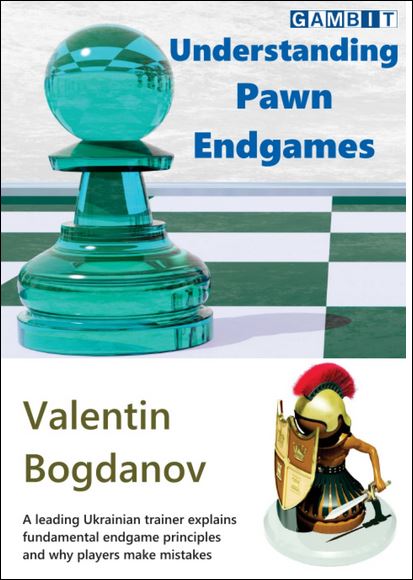
Preface For those whose attention is twitter length: do you want to become a chess champion? Here is where you start. Pawn endgames will definitely change your game to a new level. 50 diagrams to analyze deeply will do that, just do it!
If the goal is chess improvement, then endgame study is a very important part of such improvement, and even more fundamental is the study of pawn endgames.
In pawn endgames we learn mainly two things:
- To calculate deep
- Never to discount some moves, which can give the opponent a draw!
This book takes pawn endgame examples from 1981 (apart the first two examples which come from Capablanca’s games) in which top level players went astray. This immediately raises some questions, for example: if a “top” level player can play badly a pawn endgame, what about us, mere club players?
I believe such question can be answered by books like this one. Yes, today thanks to books of high level quality, written by professional players, we can gain access to a wisdom which will make us better players.
The book is based on 10 chapters, for a total of 268 great and instructive examples.
For this review, I’d like to try something different. I’ll give the title of each chapter, and 5 positions from that chapter. One must try to solve them, write down the analysis, then buy the book, and see what they got correct. This type of training, which will show the mistakes in one’s own analysis is invaluable, and a total of 50 positions if analyzed well, will surely project the player forward of at least a 100 points! (At least for what regards the pawn endgames, then one should also do the same for a book on rook endgames!)
There is also another reason for doing so. Often as chess players we love chess books, we buy them, and then we never read them, instead in this way, one will have the satisfaction of having read/analyzed/learned at least 50 of the over 260 positions presented in this book.
If we do this type of exercise enough times, let’s say 10-12 times a year, one will definitely improve.
Chapter One: Obvious Errors
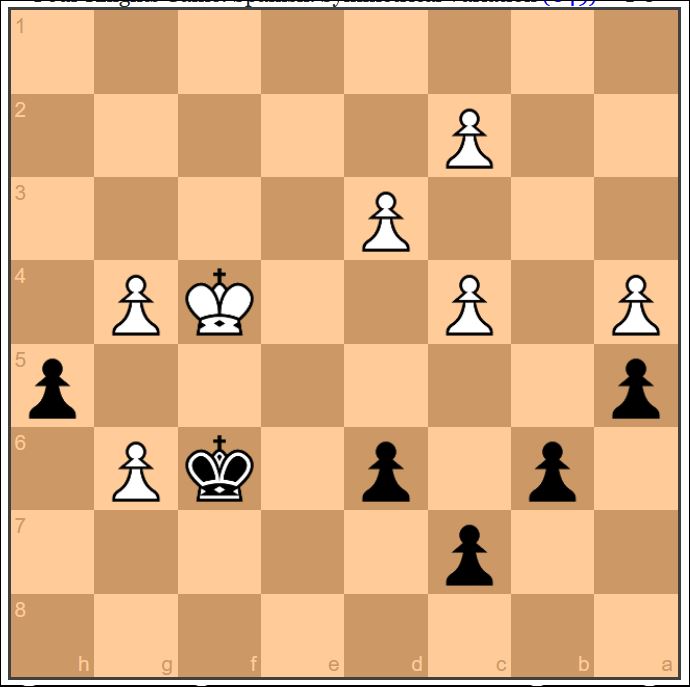
Image ch1_1
Black to move, this position comes from a symmetrical opening, the four knights game of the Spanish. Notice Black cannot win, but in some cases not losing, and being able to draw is as important. In this case Black needs to find a way to draw, since there are some moves which can lead him into a loss.

Image ch1_2
This is NOT the position you’ll find in the second diagram of chapter 1. I thought it was quite interesting, how in this position a GM blundered and lost the game. Let’s see if you can play like a GM and lose too! Or better and draw! White to move and draw.
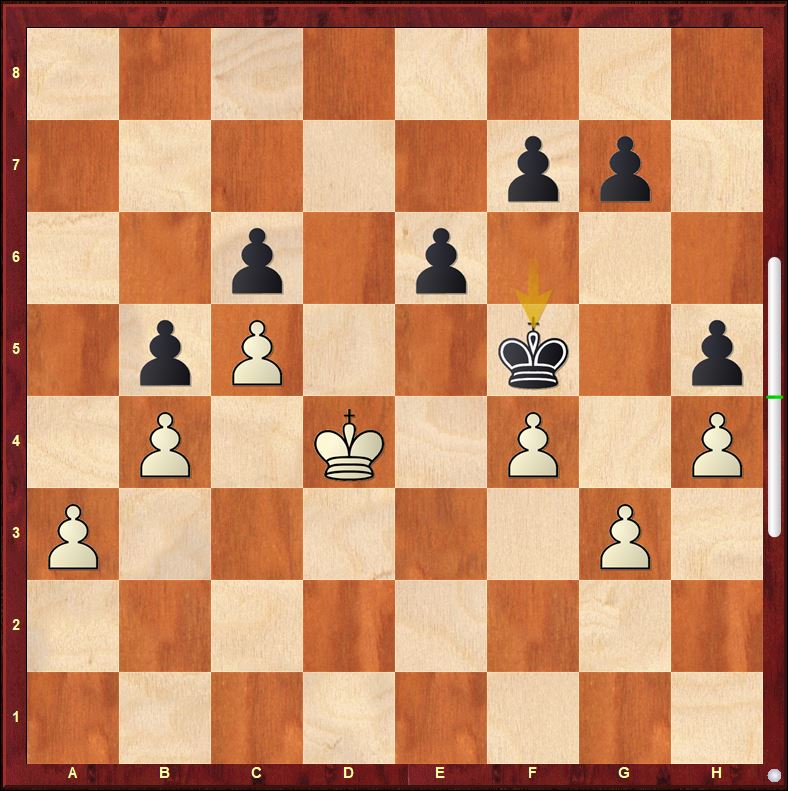
Image ch1_3
Also in this position the White player, an IM from Hungary, blundered and lost the game. Can the reader of this article do better? White to move and draw instead of losing.
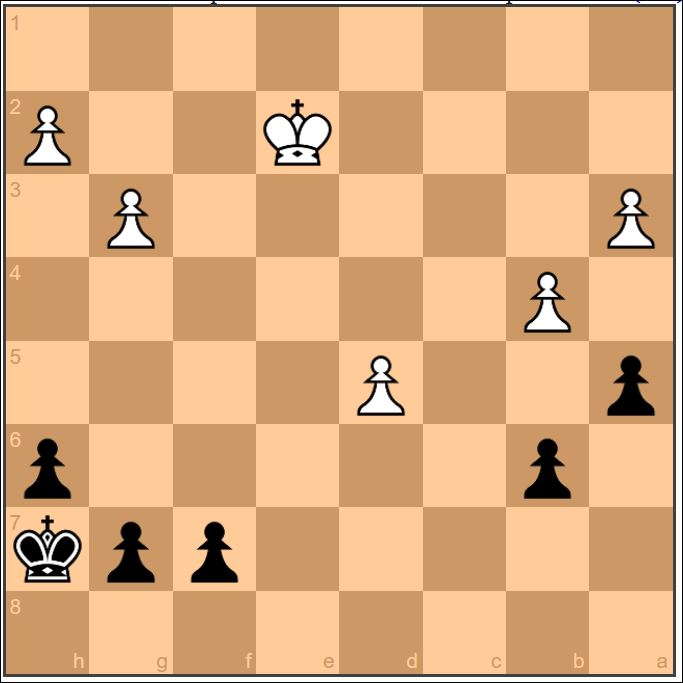
Image ch1_4
the author has found some tricky positions. Black here is Adorjan a GM who has written many chess books, who has won many tournaments, clearly a top player for the 1980ies. Here Adorjan (maybe was in time trouble?) played a natural move which at first sight I thought it was the same I would have played, but then I would have lost like him. Black to move and find the move which draws.
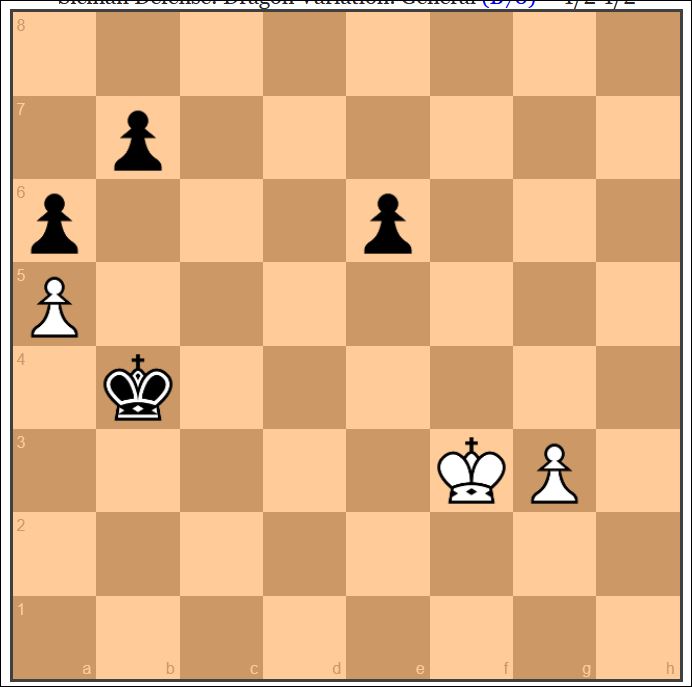
Ch1_5
Jansa is another GM who is a chess veteran, with many tournaments won under the belt. Yet in this simple endgame, 3 pawns vs 2, he missed the winning move. White to move and win. BTW my Fat Fritz 2 after 58…Bxb4 gives White winning instantly.
Engines are clearly too powerful for calculation compared to human beings, especially with these few pieces on the board.
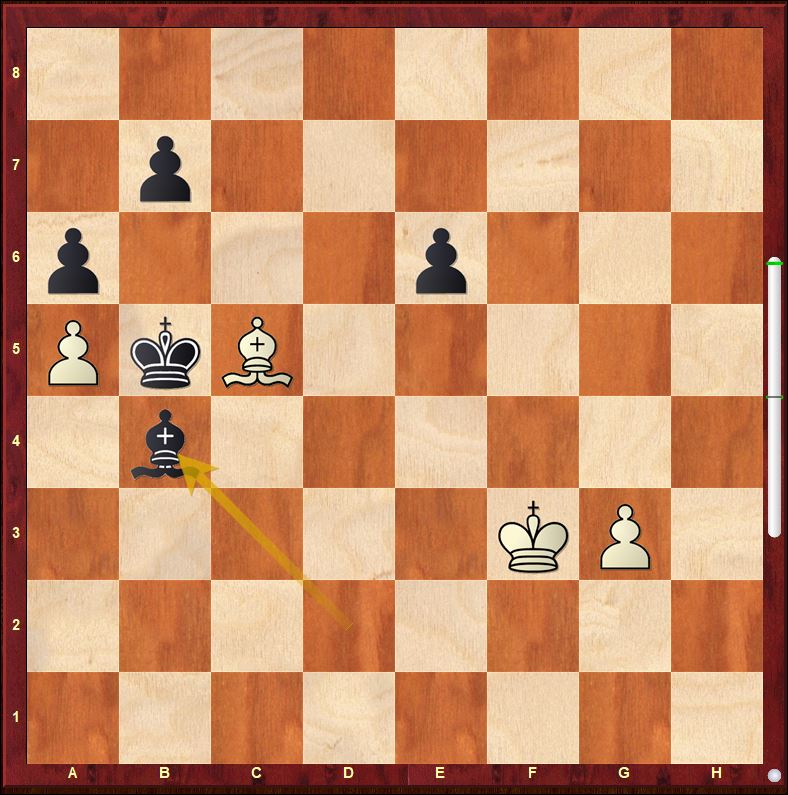
Image 58_Bxb4
Chapter 2: Breakthrough
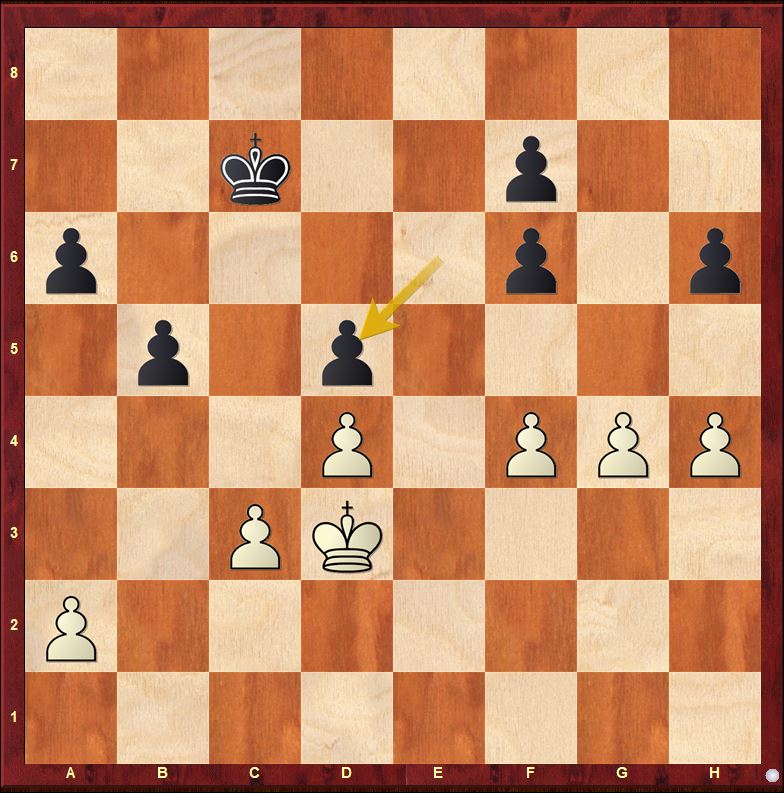
Image ch2_1
Maybe the problem here was time: this game was a rapid, and White didn’t have the time to check his calculation, but this type of position can be found in many tactical trainers online, there is a sac, the passed pawn is created and the enemy king cannot reach in time to stop from promotion. White to move and win!

Image ch2_2
White just played 53.e4 a blunder, how can Black win?
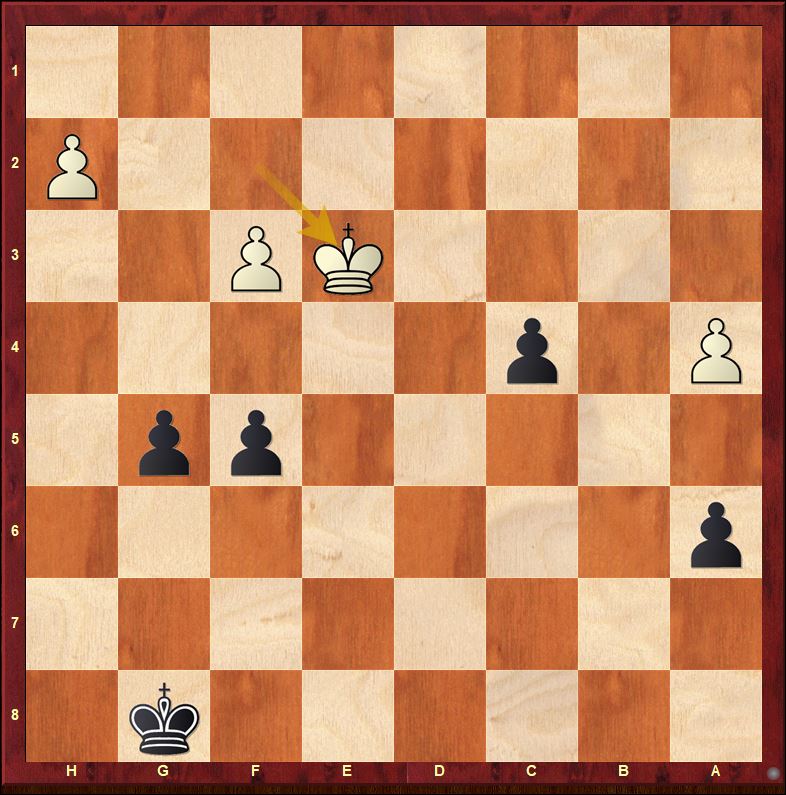
Image ch2_3
Black to move and win. (If you don’t find the right move, console yourself with the fact that Black was an experienced GM!)
As you can see dear reader I’m taking pictures of the critical positions from different sources online, because I’m trying to make a comparison on which source is the best for chess. Chessbase with its Megabase database definitely won, because it is the only one which had also some obscure games played in the past. If I’m right in December 2022, we should have the new Chessbase 17.

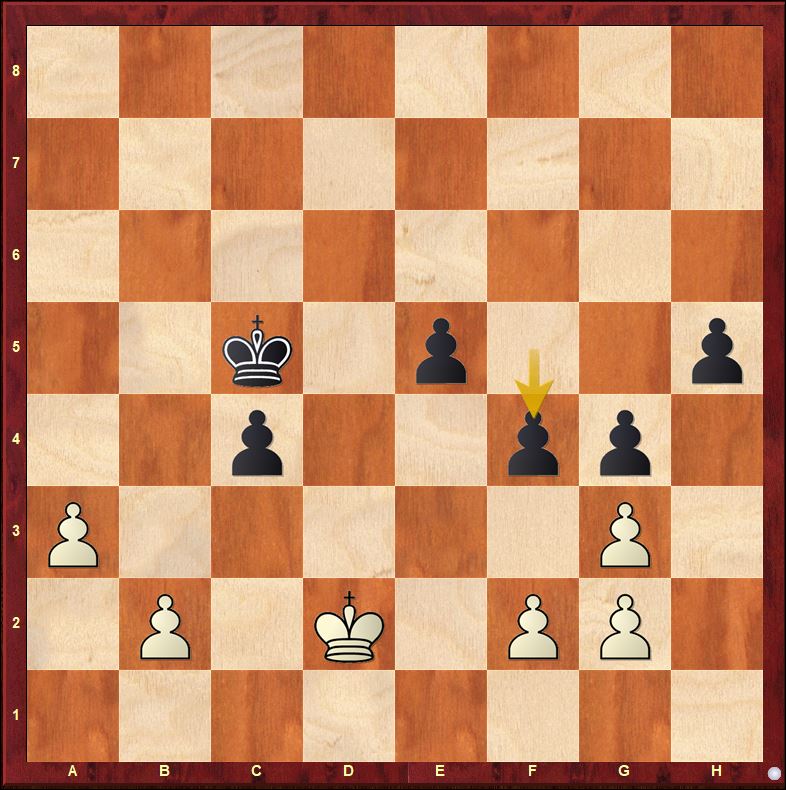
Image ch2_4
White to play and draw. There are two moves which draw, unfortunately White played a third which lead to a loss, however, White was playing against another human GM, so also Black made mistakes, and White could have drawn later. I think this position can be quite exciting to play against other humans, and see the results.
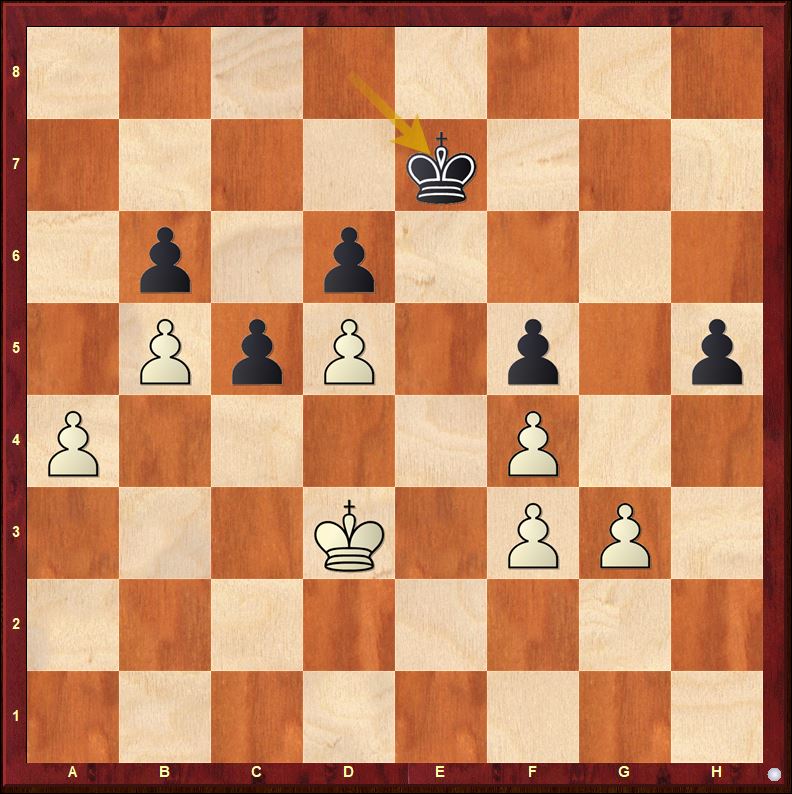
Image Ch2_5
Black a 2650+ rated GM just played 44…Ke7 a blunder. How do you win as White? (Notice White a mere 2630+ rated GM couldn’t find the winning move, the game ended in a draw)
Chapter 3 Zugzwang:
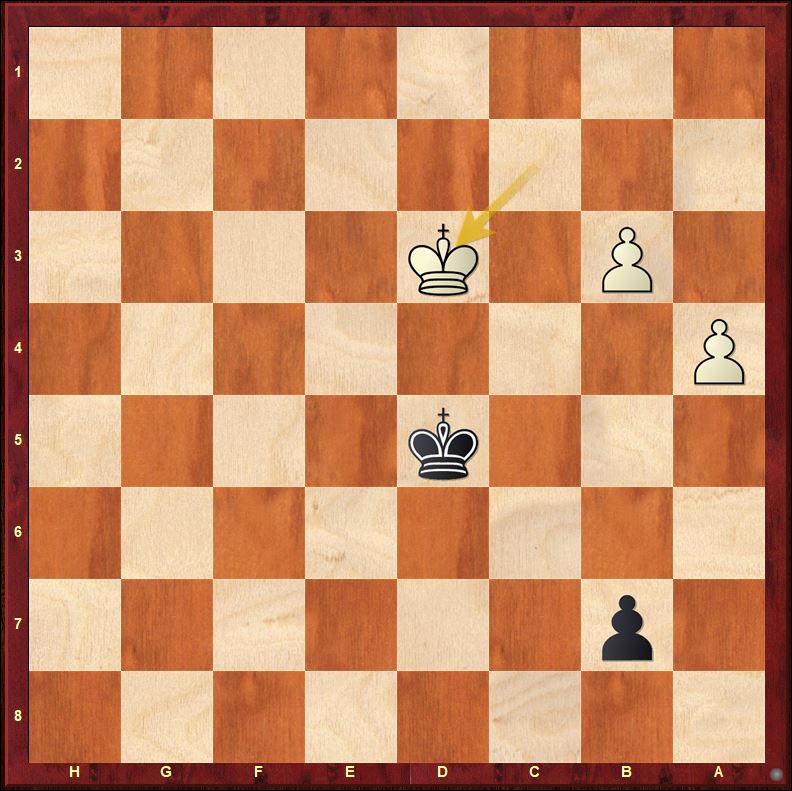
Image ch3_1
Black to move and draw.
Also in this position we see two top 2700+ players, of course the excuse here is that this game was played with rapid time controls, but there are definitely few pieces over the board, and probably this endgame would have been calculated in few seconds by an engine of 20 years ago. Instead for humans it is still a mystery. Black lost in the actual game.
I believe this position well summarizes the problem with humans playing chess. We need to define the candidate moves for Black and calculate a sequence of moves to determine if that move is good or bad. Since this need to be done by any human no matter how good he is at chess, then the rapid time control showed the flaw of human chess visualization and the limits of calculation.
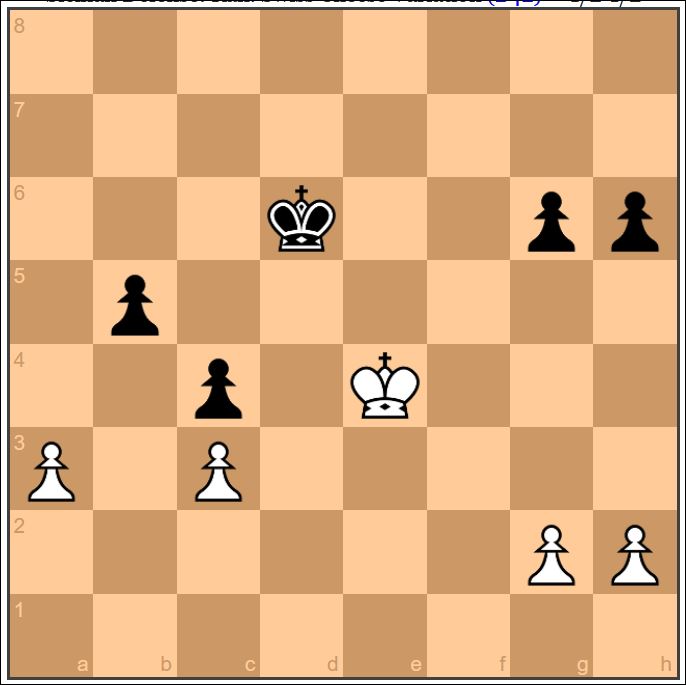
Image ch3_2
White to move and win. Also this game was played between top GMs in 1987. Unfortunately White played the wrong move, and ended in a draw.

Image ch3_4
White to move and win.
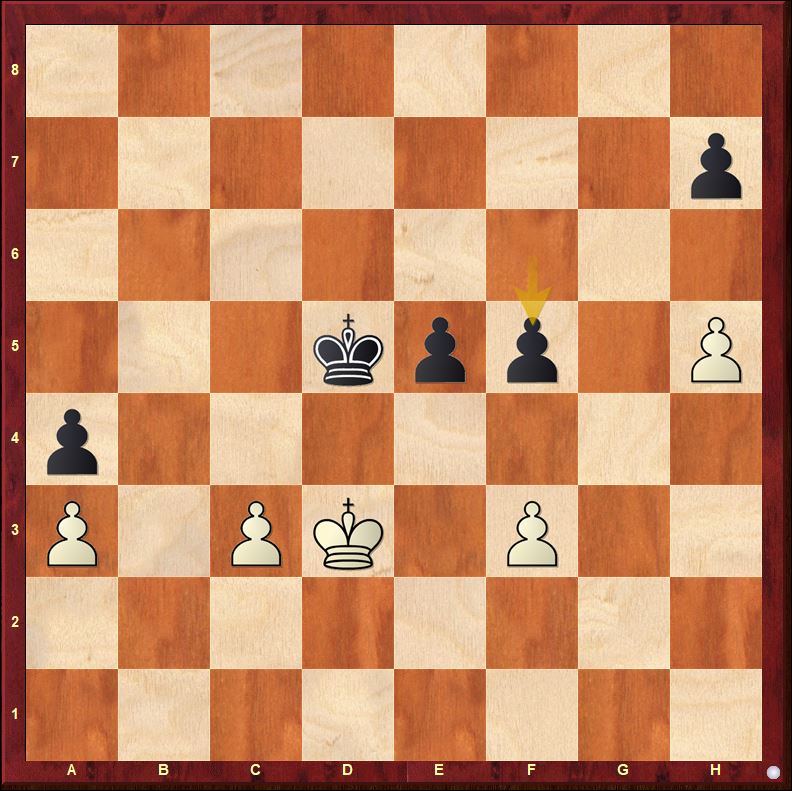
Image ch3_5
White to move and draw. In the game White played the wrong move and lost.
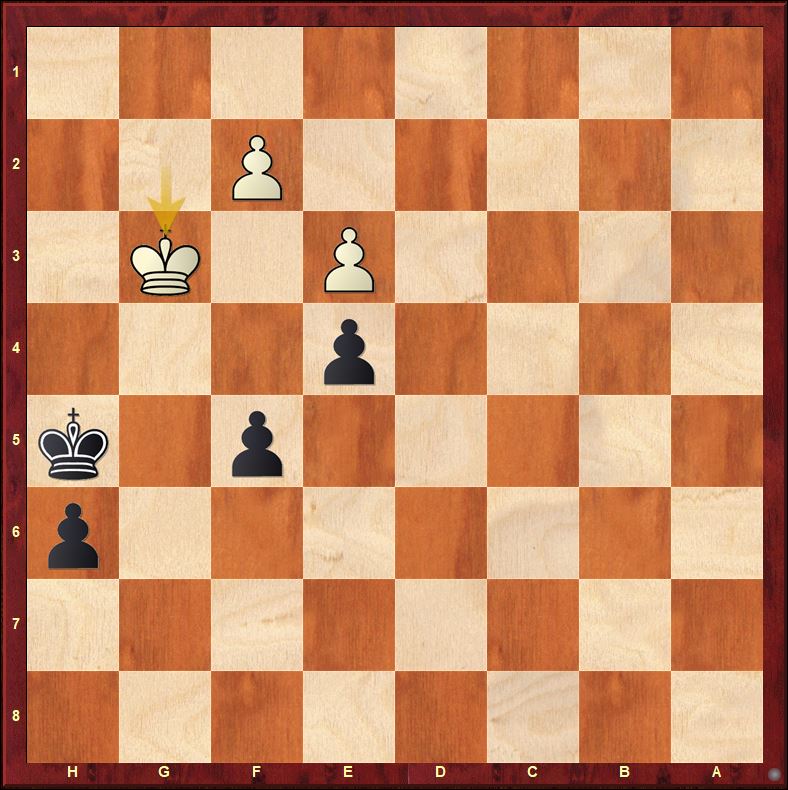
Image ch3_7
Black to move and win. I’ll help the reader, in the game Black who is a 2500+ GM, played 52…Kg5 which is not the correct move. Prove with analysis why 52…Kg6 is the winning move. (or buy the book and read why!)
Chapter 4: Opposition and corresponding squares
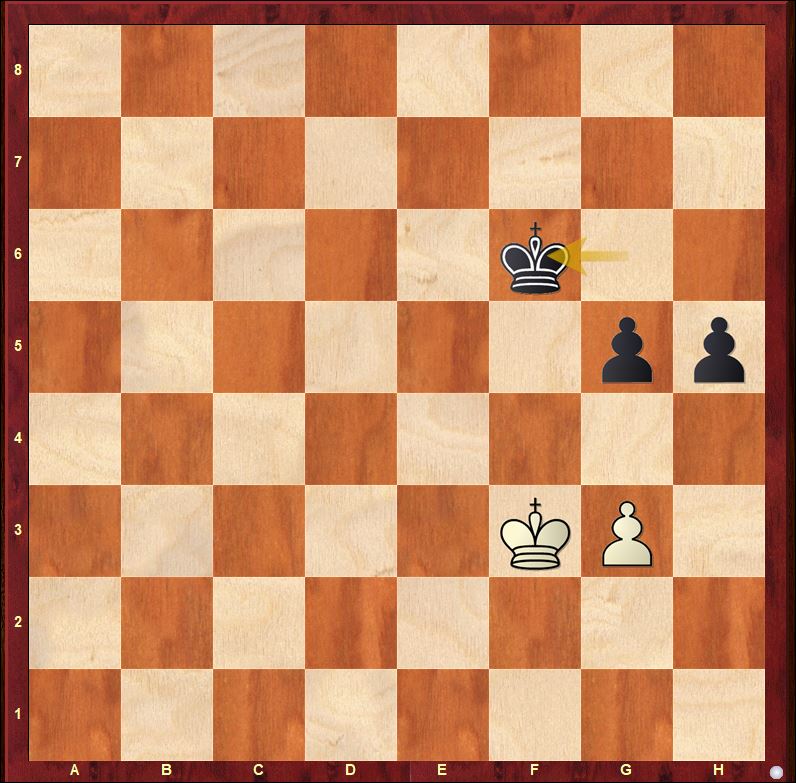
Image Ch4_1
White to move and draw. The chapter begins with this “elementary” position, which everyone should have studied. But in the real game White managed to lose playing 55.Ke4. In this case White is an FM playing against an IM.
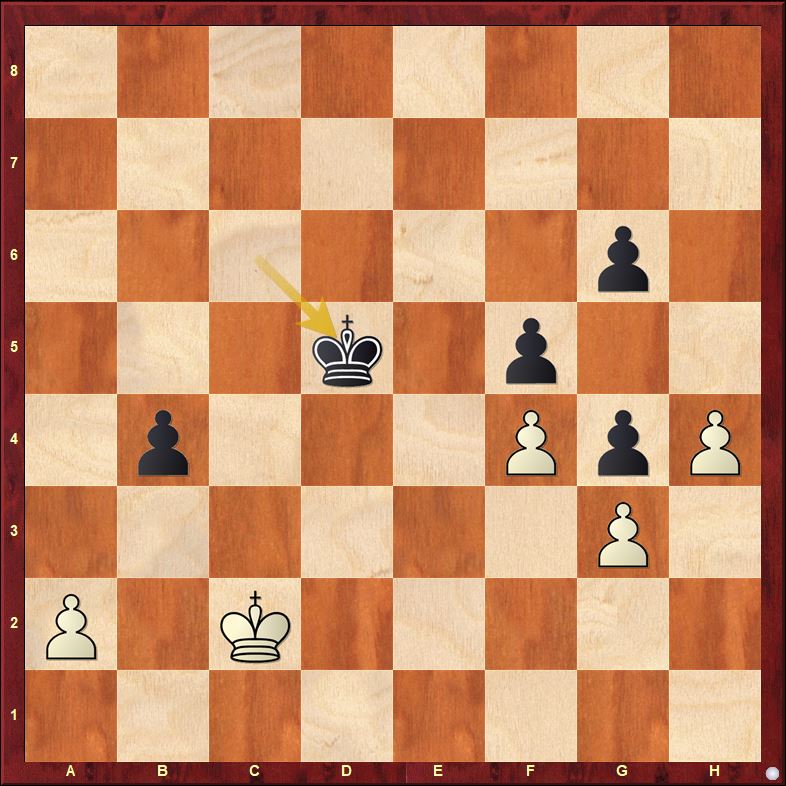
Image ch4_2
White to move and draw. Also in this case I will mention the wrong move played by White in the game, because here in order to find the right move one needs to know about “distant opposition.” White played 58.Kb3 which is the losing move. However this endgame results in (Black) queen and pawn vs (White) queen. It’s not easy to win, because the game was rapid as time control, but Black did it by move 119.
So the reader of this article can play it from both sides. As White to play and draw, or Black to play and win after White plays 58.Kb3??
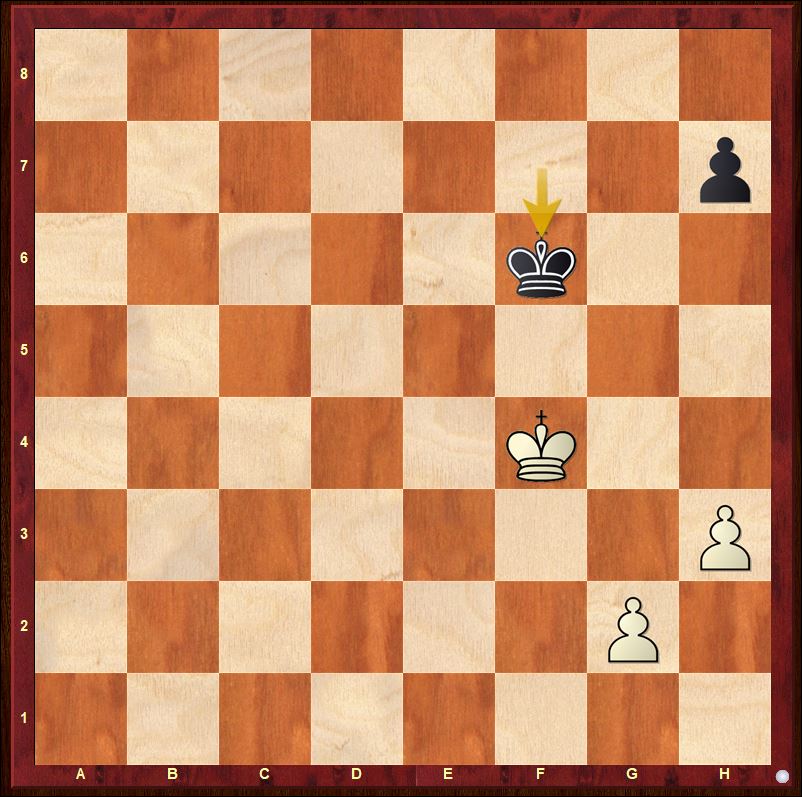
Image ch4_3
Also this endgame should be quite simple, an engine can calculate all the moves in a fraction of a second, yet for us humans it’s kind of difficult. White to move and win, notice White didn’t find the right move and he’s a 2400+ rated player with GM title. This means he definitely studied pawn endgames during his chess career. But the next example is even more funnier, the White player is a former FIDE world champion (2004-2005) and former Caruana’s trainer.
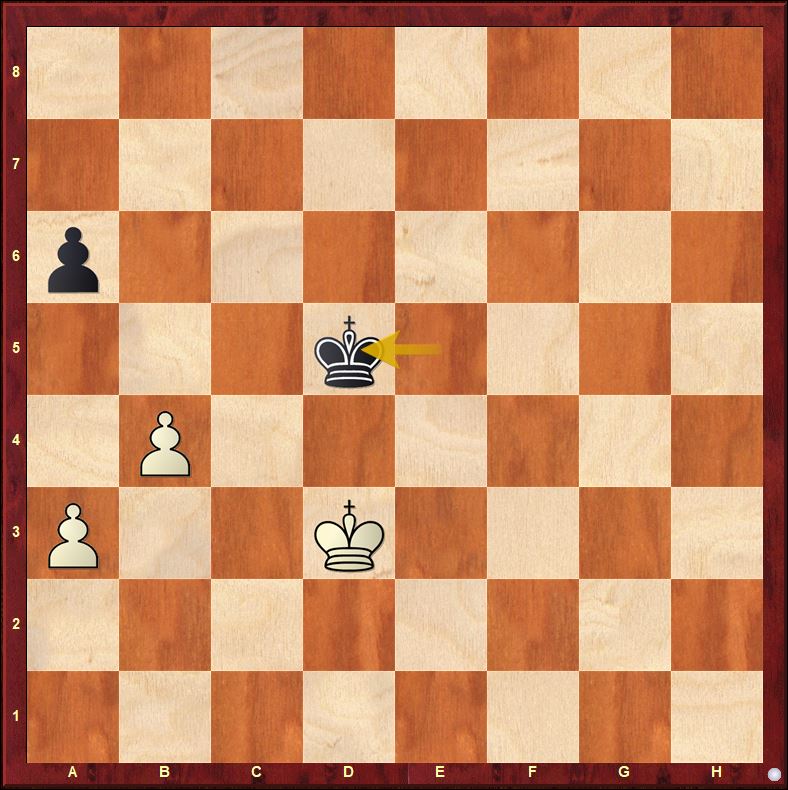
Image ch4_4
This is a rapid game, so by this point surely both players are running out of time, yet if this was played between engines we would immediately know the result, White wins.
But when played between humans, also if these humans are 2700+ or former World champions, everything can and will happen. Here White played 50.Kc3? a mistake which with correct play by Black will lead to a draw. Once more if played between engines after 50.Kc3, also with a fraction of a second for each engine, it is a draw. Black played 10 correct moves after 50.Kc3 which were all good and leading to a draw, yet on move 59 Black made a mistake, and White made another mistake, yes he missed twice, but on move 60 Black made another mistake, and finally Khasimdzhanov played the correct move and won. This is also a clear example of luck in chess, since by the amount of mistakes played between top players, we cannot say Khasimdzhanov won because of his endgame skills. And of course he has surely studied and played endgames throughout all his professional career, especially when compared to the other 99% of human chess players.
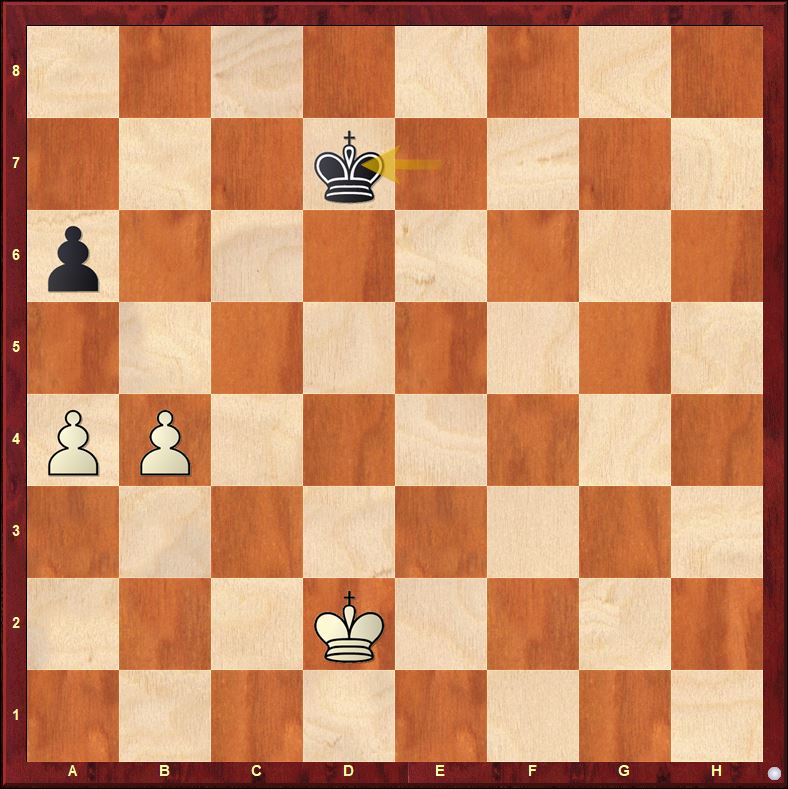
Image ch4_5
Once more we are in the game Khasimdzhanov vs Malaniuk. Black just played the losing move: 59…Kd7? White to play and win.
Chapter 5: Spare tempi
From this chapter onward, I’ll just give 5 positions each, and the side to move. Consider to buy the book because after all the author and the publisher should be rewarded for their efforts into giving us this great endgame training.
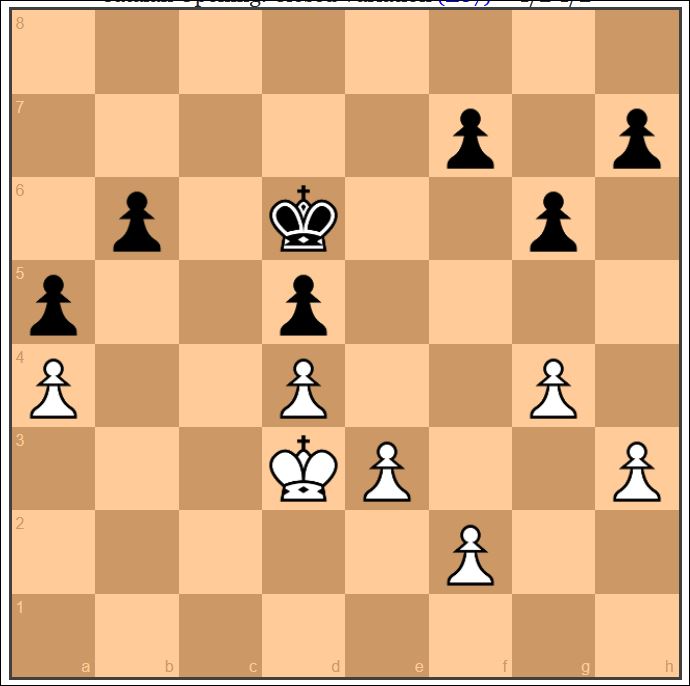
Image ch5_1
White to move and win.
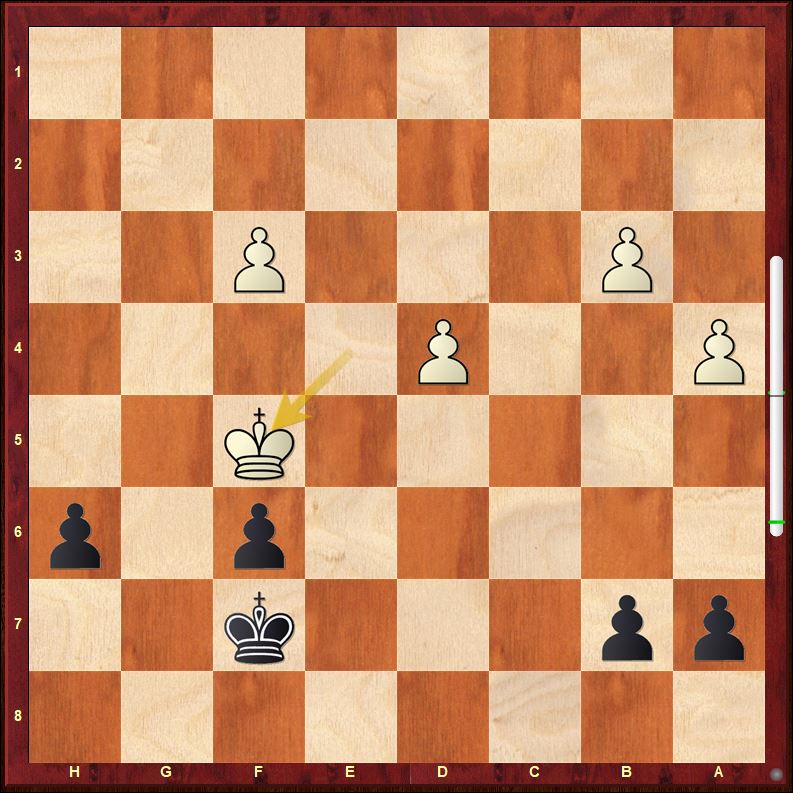
Image ch5_2
Black to move and win (Unbelievable, but yes, Black wins! And the engine takes a fraction of a second to calculate a 20 moves win)
While inserting the positions from which these endgames came from, I was also watching the games, to better understand from which pawn structures these pawn endgames were arising. While perusing the game: Kogan vs Golod 2008 I reached the following position:
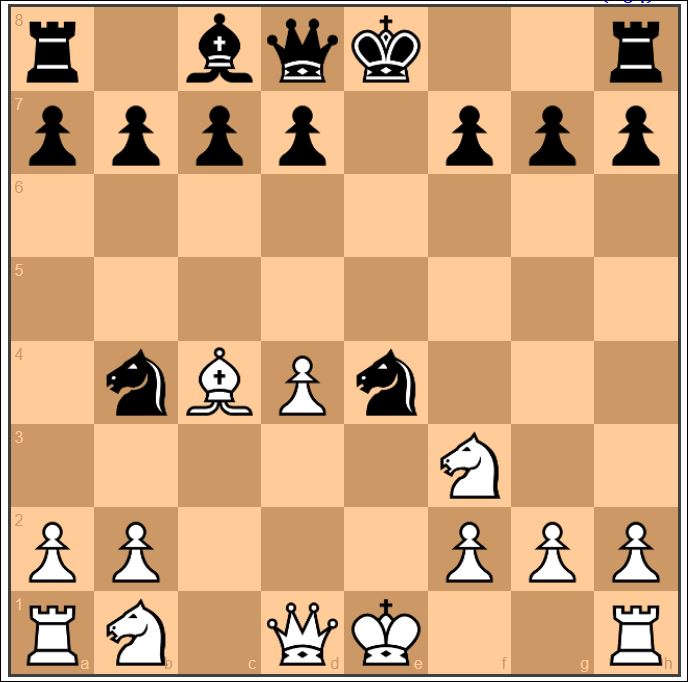
(image kogan_golod)
Here I immediately thought White should continue with: 9.Bxf7, the engine would have played the same, yet in the game 9.Qb3 was played. It was interesting to note that at the end of the variation I wanted to see with 9.Bxf7, the engine evaluated the position equal also if the enemy king was stranded in the middle of the board, and I found myself wondering how the chess principles we “believe” as human players often don’t find correspondence in the reality of the game, especially when an engine defends precisely.
It seems I cannot escape my destiny. I wanted to write this review in a couple of hours, yet it is more than a month I’m into it. Luckily I don’t have to put bread on the table thanks to writing book reviews… otherwise I would be definitely very thin!
Let’s continue with the positions from this interesting book!
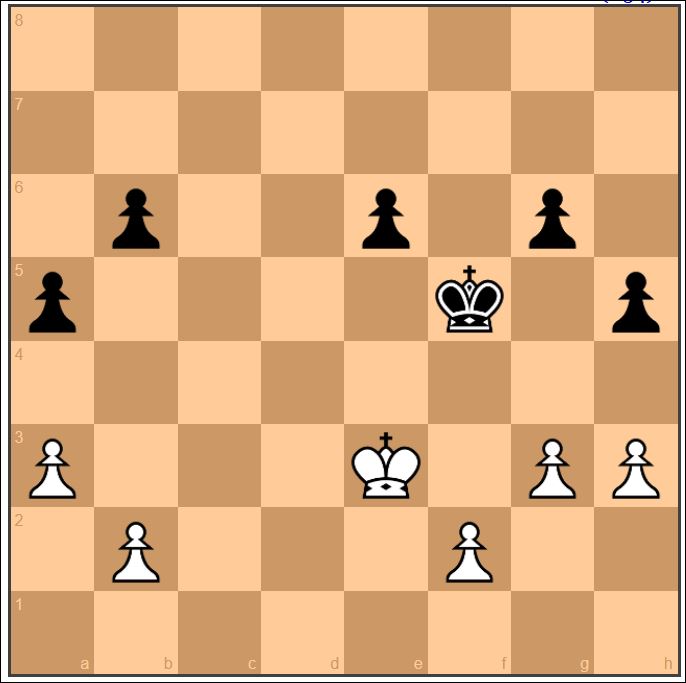
(image ch5_3)
White to play and win (in the game, due to White’s blunder, Black won)
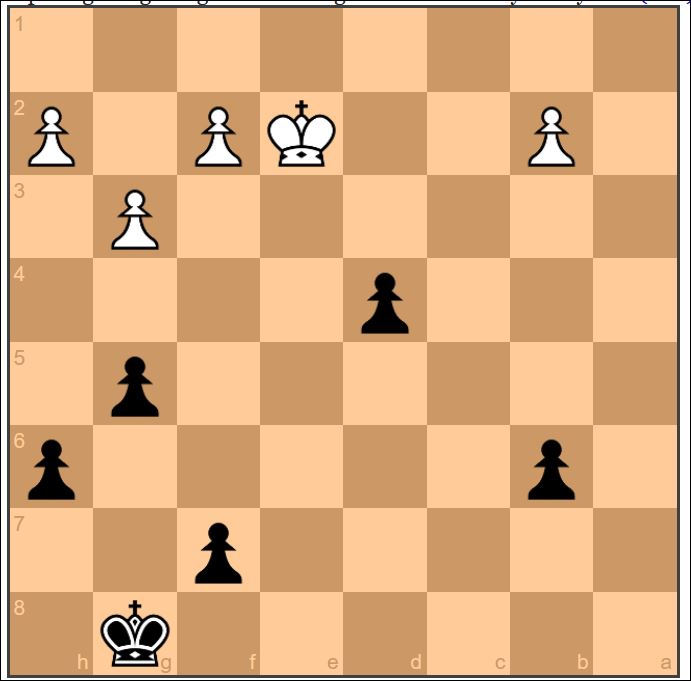
(image ch5_4)
Black to move and draw, in the actual game Black (2700) failed to find the correct series of moves to draw.

Image ch5_5 Black to move and draw (these positions are extremely interesting, because more than calculation, one needs to find the right idea)
Chapter 6: The fight to promote
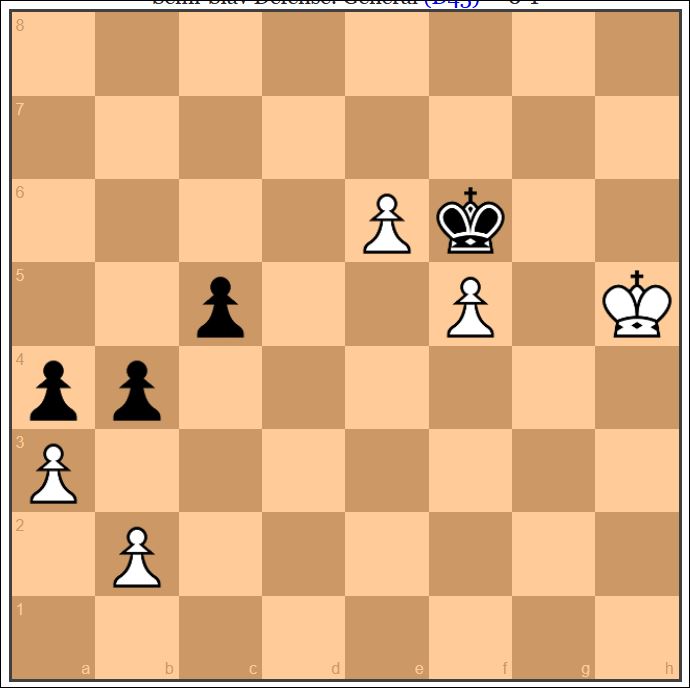
Image ch6_1
White to move and draw.
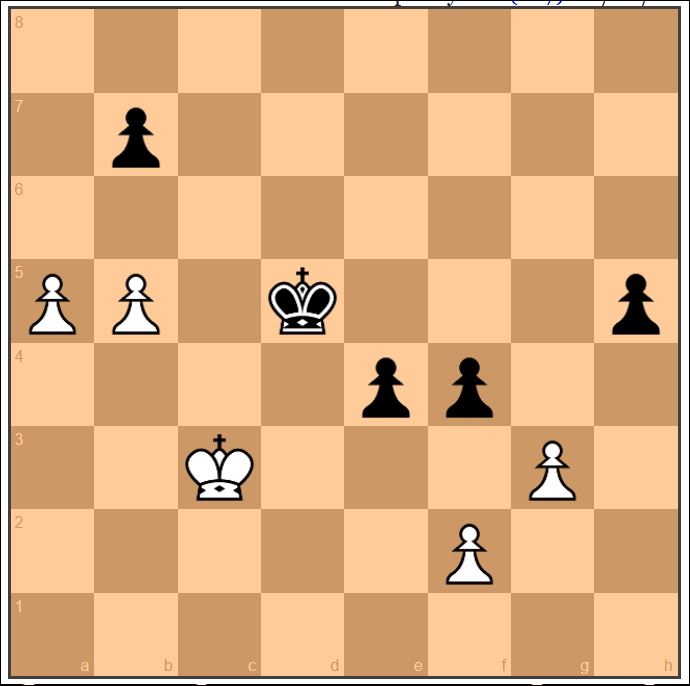
Image ch6_2
White to move and win.

Image ch6_3
This endgame may be impossible to calculate for a human. White to move and draw (maybe for humans it’s easier to win the lottery). But the interesting point of the endgame is: after about 5-6 moves White reaches a simplified position, in which one can draw by knowing how to stalemate the enemy king on the A or H files.
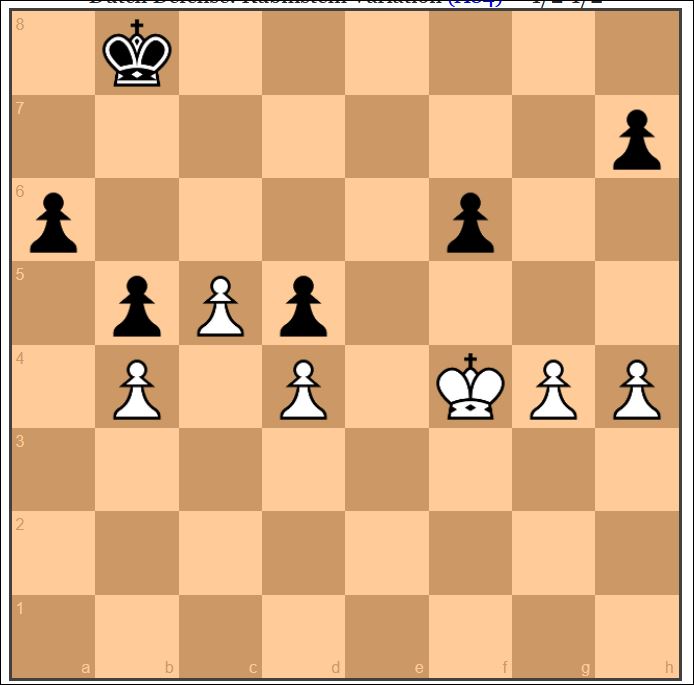
Image ch6_4
White played 49.g5? which lead to a draw. The winning move is 49.Kf5. try to win.
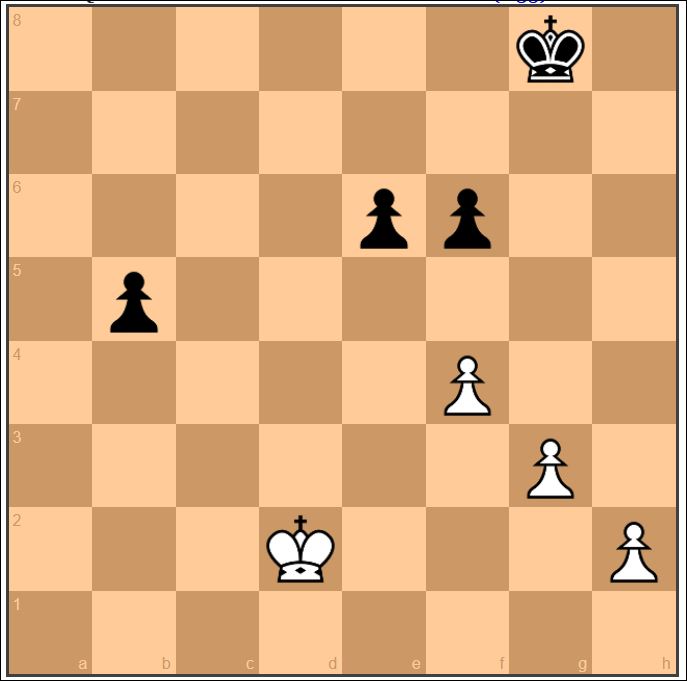
Image ch6_5
Black just played 43…f6 a blunder, White to move and win.
Chapter 7: Changing the pawn structure
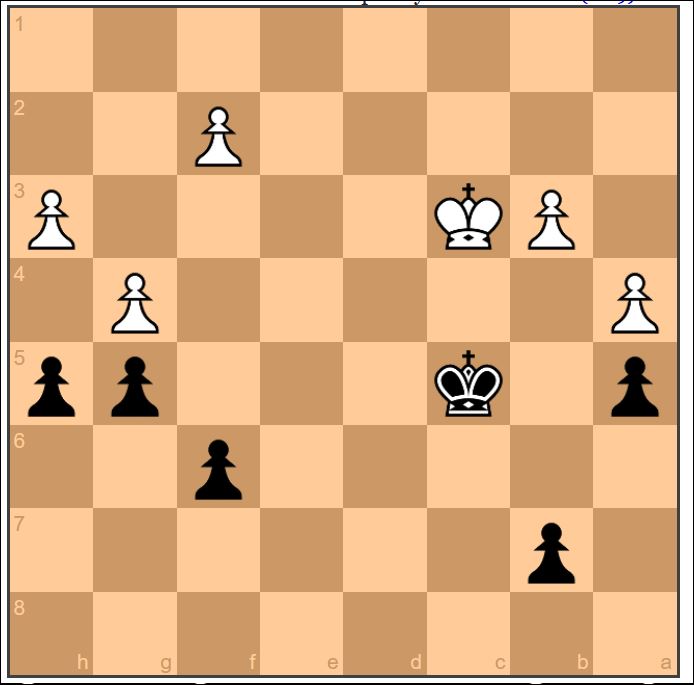
Image ch7_1
This seemingly draw endgame was played between Short (in that time a top of the world chess player) and Vaganian. White just blundered, clearly he didn’t study endgames like Niemann did under coach Aagaard. Black to move and win.
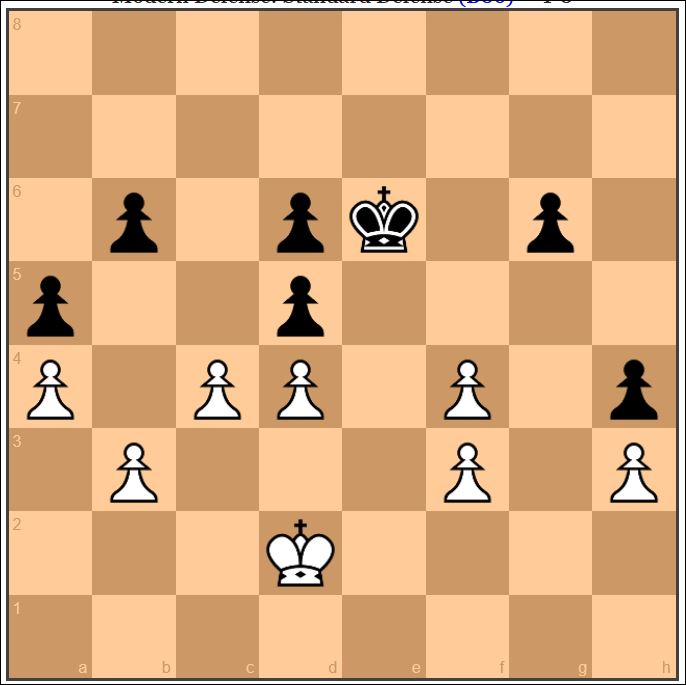
Image ch7_2
White to move and win.
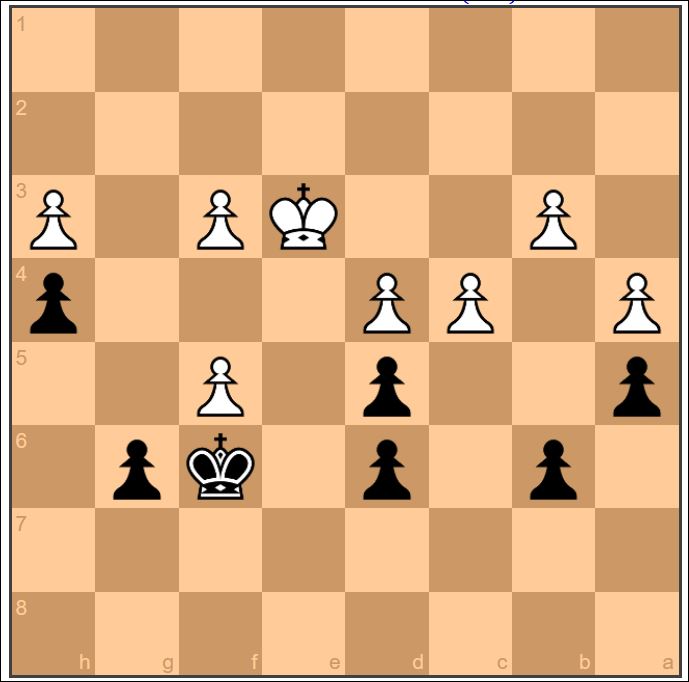
Image ch7_2_1
Black to move and draw.
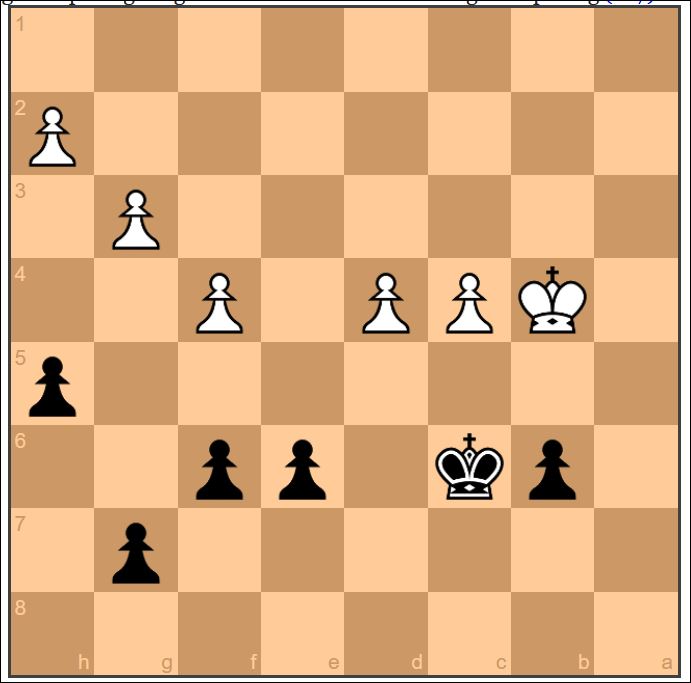
Image ch7_3
Black to move and draw. In the game Black played 35…g5 a mistake, but to see the mistake one needs to calculate/visualize 7 moves.

(image ch7_4)
White to move and win.
Chapter 8: Calculation
By now we have seen a plethora of examples in which top GMs failed. If one buys the book the number of examples are even more, it reads like a description of how poor human play in the pawn endgames actually is. All these players were not amateurs or club players who have a job and career, they are professionals who played chess all their lives, yet they would fail even with few pawns over the board. This chapter will make you definitely understand how bad the quality of the chess game is at human level. Of course the exception are those learning endgames from esteemed coaches and who are intuitive players.
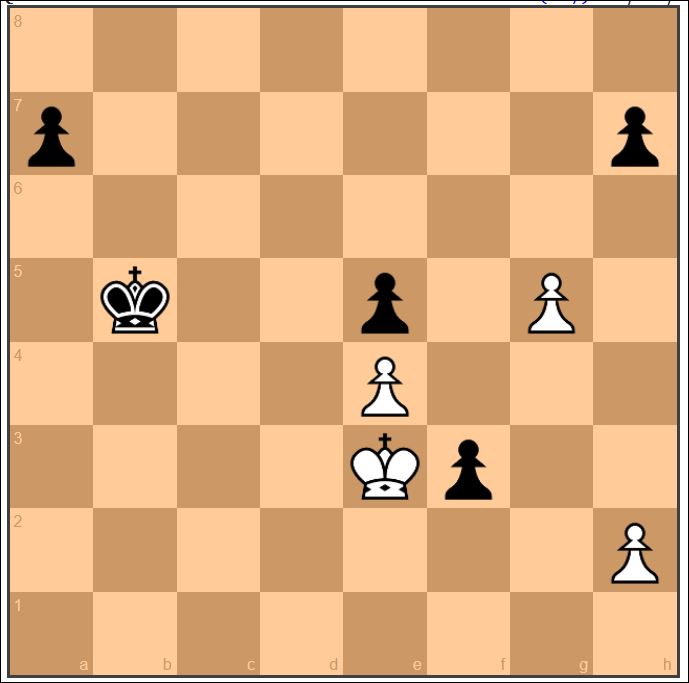
Image ch8_1
White to move and win (about 7-9 moves are needed to see the win)
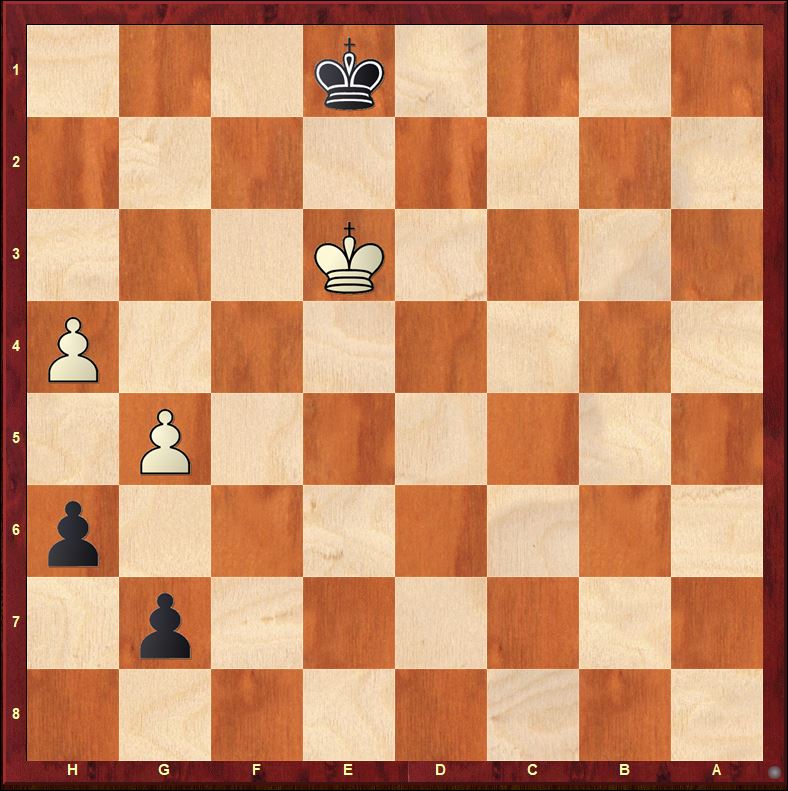
Image ch8_2
Black to move and draw.
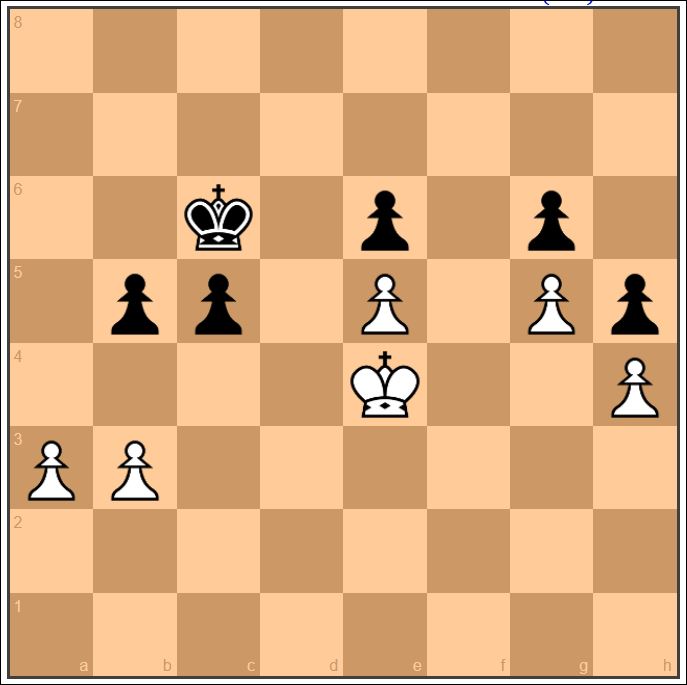
Image ch8_3
Black to move and draw. In the game Black played fxg5 and lost.

Image ch8_4
White to play and draw. (about 9 moves to visualize)
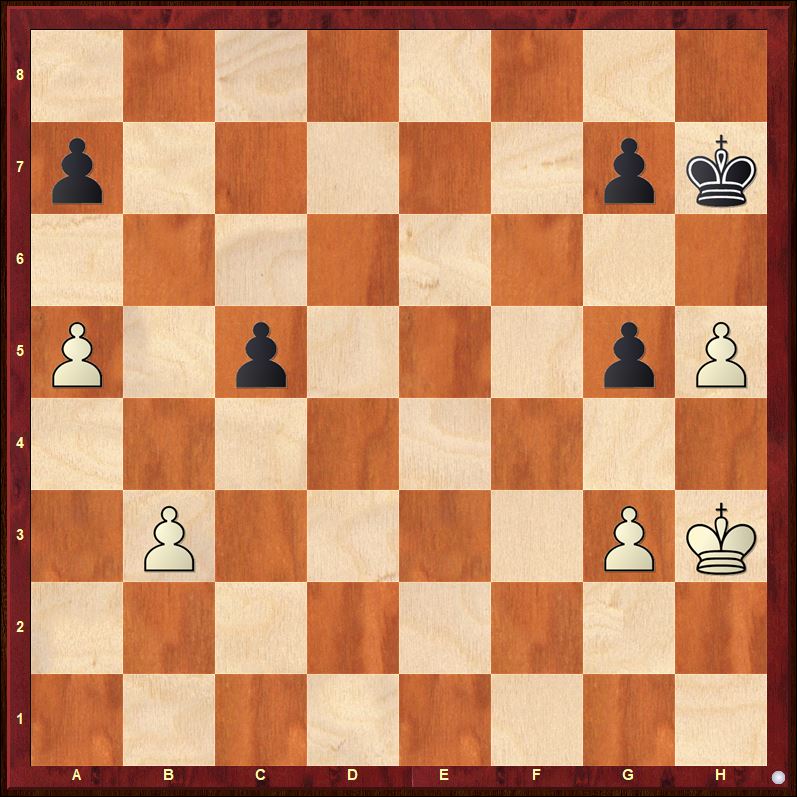
Image ch8_5
White to move and win.
Chapter 9: Evaluating the resulting queen endings
These endgames are quite interesting, because calculation for a human is not enough. One must know something about the position of the pawns, because on some files one can draw also if against a queen.

Image ch9_1
White needs to play move 49… one move brings Black into a favorable queen endgame, instead if White plays the correct move, the endgame is a draw.
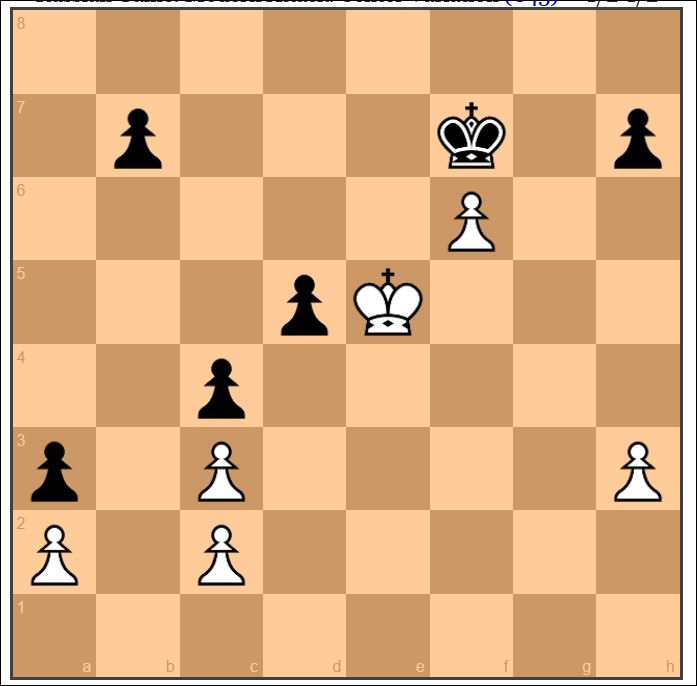
Image ch9_2
White to move and win. (the line which prove White wins, is 18 moves long!!)
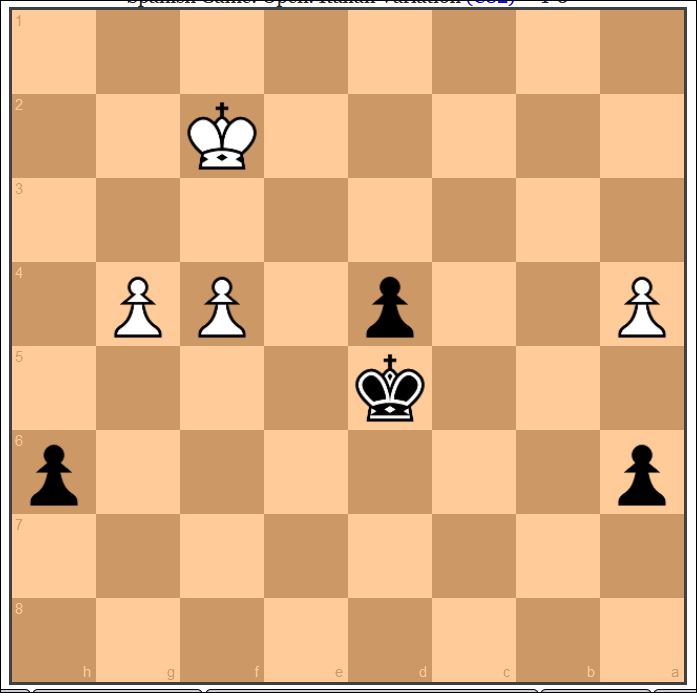
Image ch9_3
Black to move and draw. Honestly I don’t think it’s easy to draw. But what I believe is that it’s important to get exposed to these positions, and try to understand what works, and what not, because maybe it will become useful in a tournament game. Obviously the problem for adult learners is that we don’t have this sweet time to waste, with family, work etc. going on.
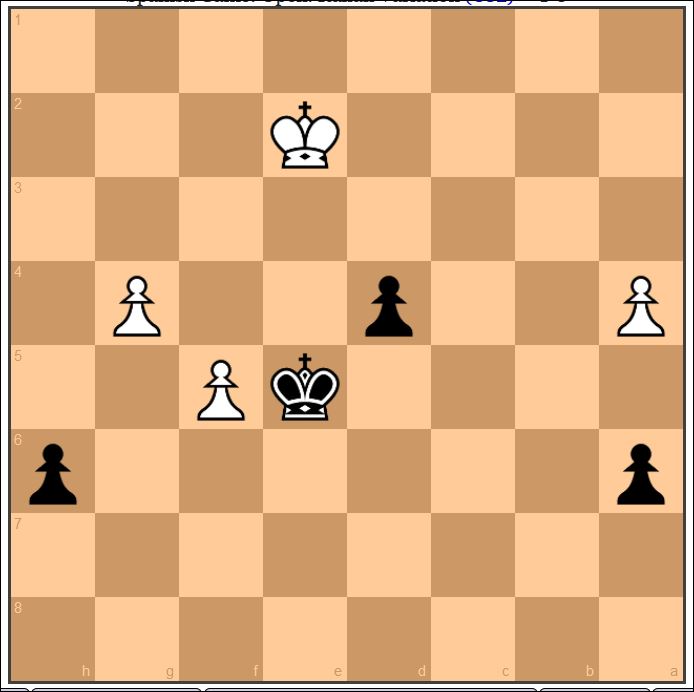
Image ch9_3_1
From the same game as before… here if Black plays the right move he draws, in the game he played the wrong move and lost! Black to move and draw.
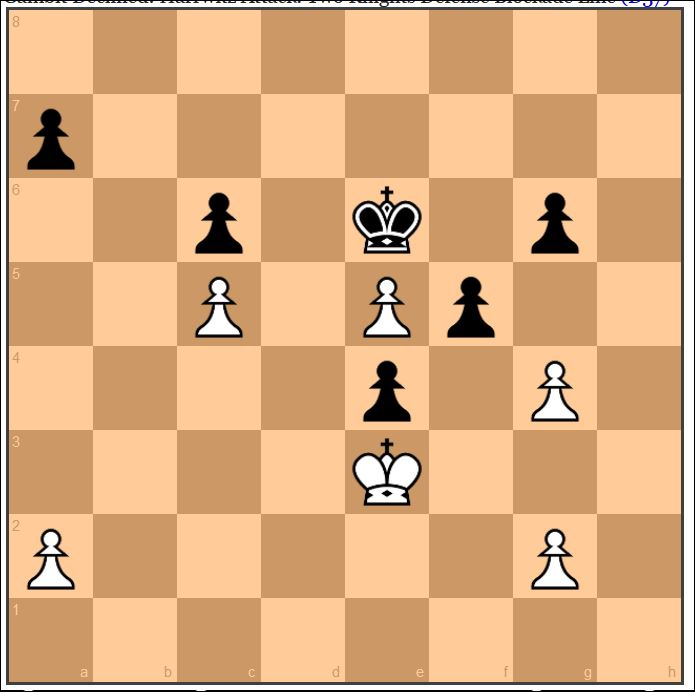
Image ch9_4
White to move and draw. Here White blundered, but he didn’t lose because Black wasn’t able to find the right move either. This entire book appears to be a collection of tragic-comical mistakes made at top level. Obviously I feel if this is the top level of chess (Bareev and Vaganian two top players in the year 2000, which had played chess as professionals all their lives) there is little comfort in how ugly and full of blunders are the games in weekend tournaments, and how little chance we have to improve. The book can be used as a lesson in humility.
Chapter 10: Positional play
Finally after nearly 2 months reviewing this book, I reach the last chapter.
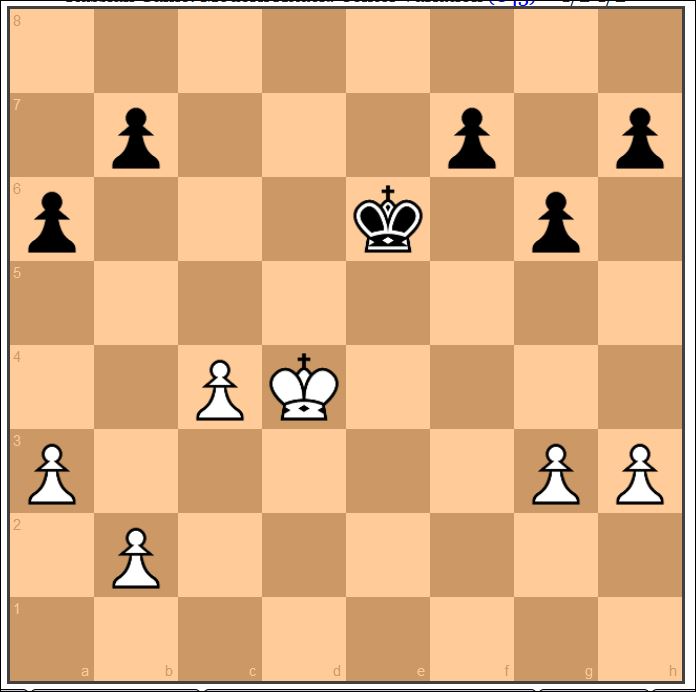
Image ch10_1
White to move and win. (The game ended in a draw, White missed many chances.)
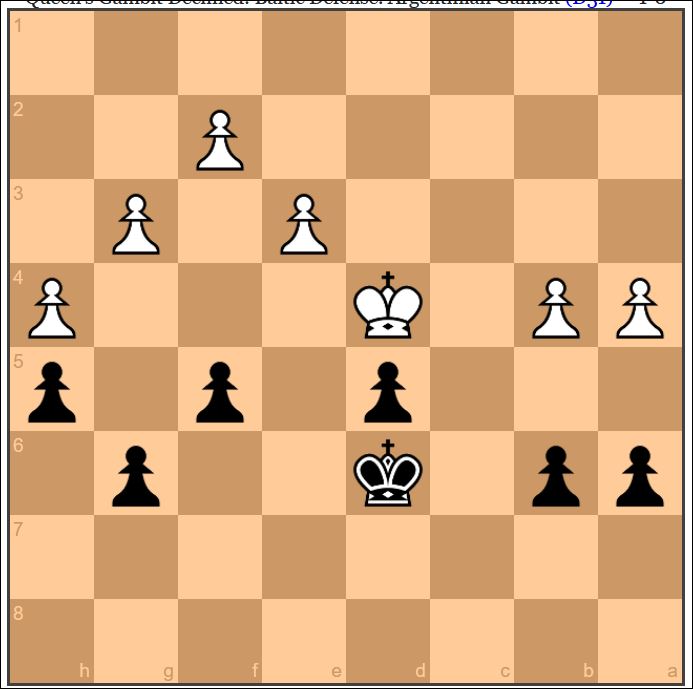
Image ch10_2
Black to move and draw. This position will help understand why without an engine some players cannot draw and they lose badly!
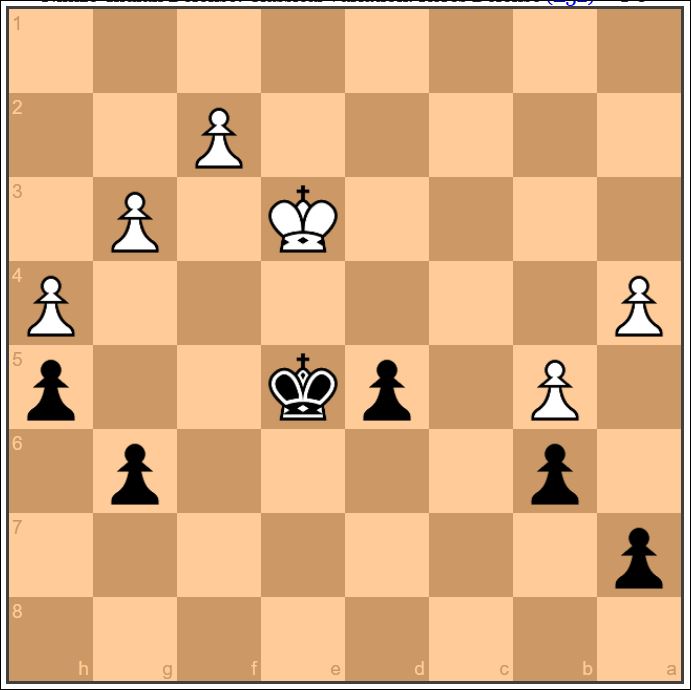
Image ch10_3
Black to move and draw! The move played in the game made Black lose, yet was quite natural.
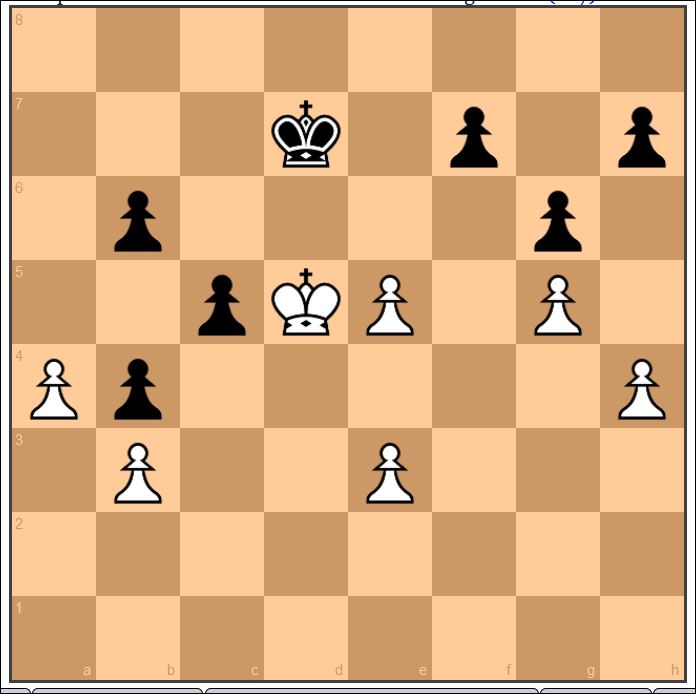
Image ch10_4
also here White to move and draw, the move which saves the game is counter-intuitive.
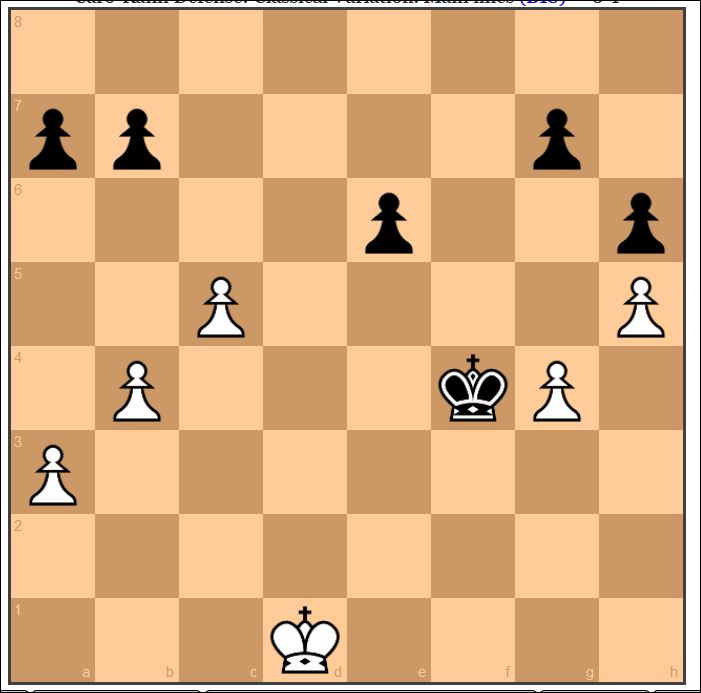
Image ch10_5
White to move and draw
Finally the tour de force of copying all these positions is over. Clearly this book is amazing, because it obliges the serious chess student to think. When we have forced moves, it’s easy to calculate also long variations, and it’s easy to play. Instead here we need to find the right move, we need to learn how to analyze. In the 1950ies-70ies players learned to analyze thanks to adjournments, now we don’t have such tool anymore.
Pro and Con: in the book all diagrams are oriented from White’s side even when it’s Black to move. We are in 2022, Chessbase has given everyone the chance to learn how to orient the diagrams correctly. The job of a editor should be to have the diagrams oriented correctly. When we see diagrams oriented from the White side in an opening repertoire for Black or in a book where Black is the side to move, we know someone was lazy in giving us a product which could have been done better with few clicks of mouse.
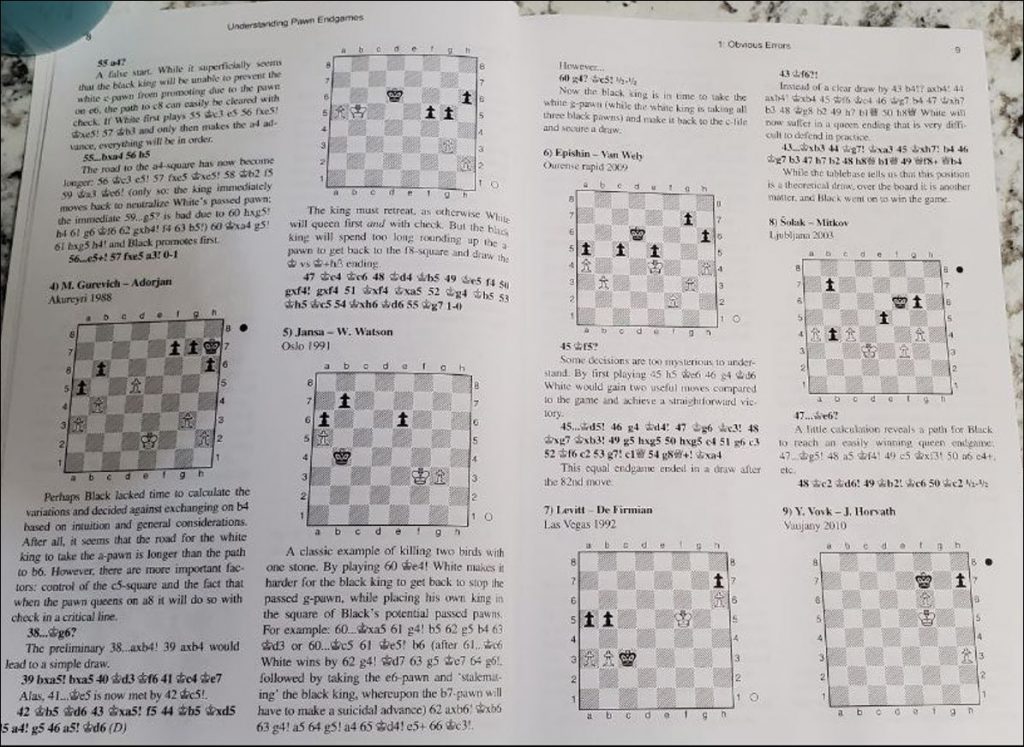
In this example page out of 7 diagrams in 3 Black is the one to move, clearly it would be nicer to spend the money over a product which has the diagrams oriented correctly.
There is also another reason for having them oriented from the correct side: I want to train my visualization, and see if I can read a book without the board. This technique was told me from a Candidate Master in Italy, and he was a good player, someone worthy to learn from and listen to. But in twitter I saw another chess player with a great amount of followers, who likes to cut the books he buys and make flashcards, definitely to have the diagrams oriented correctly would surely help in such training.
As mentioned the book is for Club Players (or maybe even master level players) who are familiar with some chess concepts. This can be seen on Chapter 3 Zugzwang, where the idea of Zugzwang is not explained through examples like in a book for less advanced players. Also concepts like: “Opposition, Corresponding squares and spare tempi” may not be clear to beginners. Notice the zugzwang is not something we see only in endgames, like many of Fischer’s games prove, when his opponents were already in zugzwang in the middlegame.
There are also positions which are objectively too complex to analyze for humans, and we understand them today thanks to tablebases, like 55 Ivanov vs Svidler 1996, at page 28-29. I doubt a human over the board can calculate three different endgame lines which are 10 moves deep and which end into a “drawable” tablebase queen endgame.
A pro is that every diagram has the name of the players and the year in which was played. For those curious from which opening the position originated, it can take few clicks on Chessbase to see the entire game. This can also help to connect the opening, and middlegame ideas to which endgame we will end up into.
Personally while working on this review I enjoyed watching the entire games to see when things went wrong. Seeing it happened to GMs who are professionals, meaning someone putting bread on the table thanks to playing chess, it made me think our brains, also after years of training, don’t work very well with calculation and candidate moves selection.
I also found interesting that every diagram has letters and numbers on all sides, in previous chess books there was only on one side or none at all, maybe an improvement made to target the beginners.
Sometimes when we see a game we miss the context, this is particularly important for the endgame. We don’t know if in many of these endgames the players were in zeitnot. We don’t know how tired they were. And maybe one day would be interesting to have a book which compares mistakes from the era where adjournments existed compared to now.
Maybe it could be important to add a chapter 11, where the author puts 100 positions, 10 for each chapter, without explanations, and ask the readers to find the correct move. This would help the reader to understand if he improved his pawn endgame play, or if he needs to study the book again.
Final thoughts: this book is not for beginners. It is a book for club players, or tournament players, who want to improve their chess through the study of pawn endgames. Chess Mastery is definitely linked to be able to achieve better results in pawn and rook endgames, hence the study of this book is needed. However, this article can show coaches of all level of chess players a useful series of position to test their students.
One last thought: after seeing the top names in this book who failed simple pawn endgames over and over, one cannot say he wasn’t warned. Honestly seeing all these big names fail, made me feel bad for my own chess.
